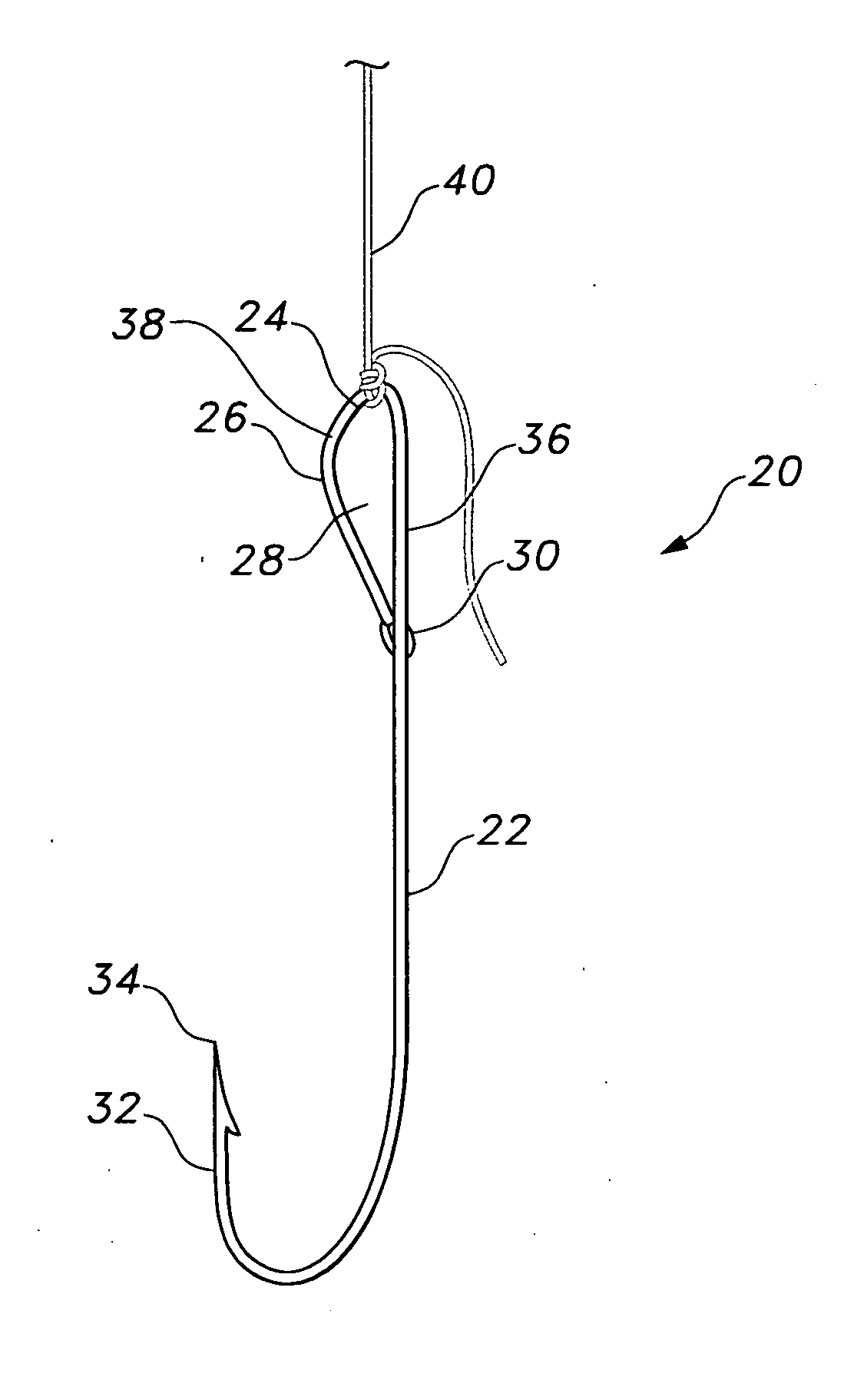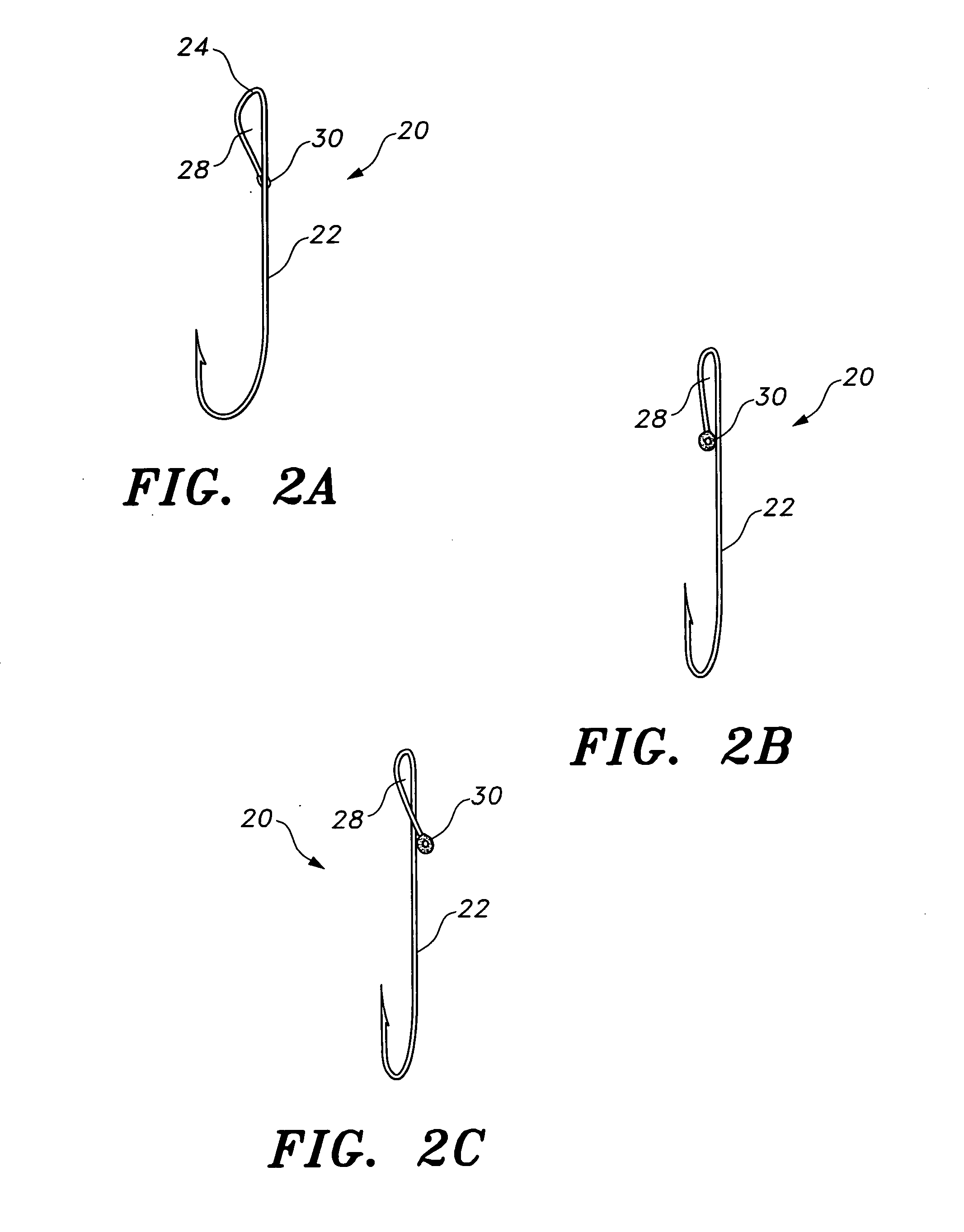Fishing hook and method for attaching a snell to a fishing hook
- Summary
- Abstract
- Description
- Claims
- Application Information
AI Technical Summary
Benefits of technology
Problems solved by technology
Method used
Image
Examples
Embodiment Construction
[0029] The present invention is a fishing hook and a method for attaching a snell a line to the fishing hook. Referring first to FIG. 1, features of the fishing hook may be appreciated.
[0030] The fishing hook 20 is preferably formed from a relatively strong metal wire. The fishing hook 20 includes a shank 22. The lower end of the shank 22 is bent to form a hook portion 32 that comes to a barbed point 34. The upper portion of the shank 22 is preferably bent to form a D-shaped eyelet 26 defining an eyelet opening 28 with a cleft 24 (best shown in FIG. 2A) at the apex of the eyelet 26. The D-shaped eyelet 26 is formed by a rectilinear extension 36 of the shank and an arcuate leg 38 that curves downward and outward from the apex of the eyelet 26 towards the point 34 of the hook portion 32 and then back towards the shank 22. A leader line or snell 40 is attached to the fishing hook 20 with a knot that lodges in the cleft 24 of the eyelet 26. The cleft 24 maintains the position of the kn...
PUM
 Login to View More
Login to View More Abstract
Description
Claims
Application Information
 Login to View More
Login to View More - R&D
- Intellectual Property
- Life Sciences
- Materials
- Tech Scout
- Unparalleled Data Quality
- Higher Quality Content
- 60% Fewer Hallucinations
Browse by: Latest US Patents, China's latest patents, Technical Efficacy Thesaurus, Application Domain, Technology Topic, Popular Technical Reports.
© 2025 PatSnap. All rights reserved.Legal|Privacy policy|Modern Slavery Act Transparency Statement|Sitemap|About US| Contact US: help@patsnap.com



